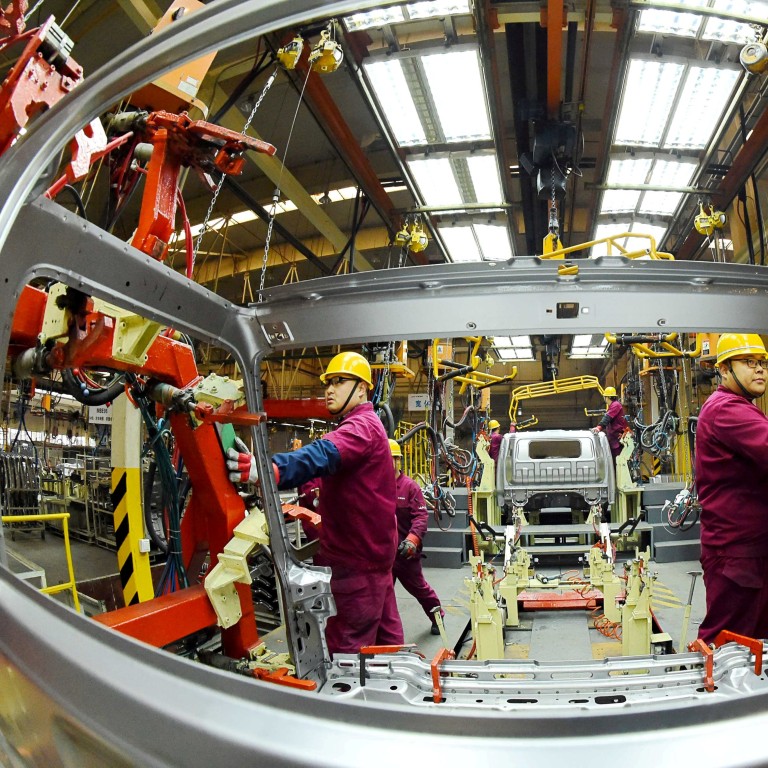
Exclusive | Asian Development Bank chimes in with dire prediction for China’s 2019 economic growth if trade war deteriorates to worst-case scenario
- ADB sees China growth of 6.3 per cent this year under existing sanctions, 5.3 per cent if US sanctions all Chinese exports
The outcome of the ongoing US-China trade war will be critical to how China’s economy and those of other Asian nations perform this year, the Asian Development Bank’s president said.
If relations were to deteriorate and the trade dispute were to escalate into a full-blown war, “the immediate impact would be particularly hard on China” and that “other economies in developing Asia would initially feel the pinch as production slowed across global value chains,” Takehiko Nakao said in an interview with the South China Morning Post in Tokyo.
US tariffs that have already been imposed could crimp China’s economic growth rate by 0.5 percentage point in 2019, worsening to a full percentage point if all bilateral trade were to be taxed at a higher tariff rate, said the former Japanese vice finance minister.
The worst-case scenario could slow China’s economic growth to 5.3 per cent, making it the slowest annual increment since quarterly data began to be reported in 1992.
The dire forecast underscores the stakes as Chinese and US negotiators wrapped up talks this week aimed at resolving the outstanding issues in the trade war between the world’s two largest economies. Both sides ended their three-day talks in Beijing with the agreement to create a framework to verify China’s commitment to structural industrial reforms.
In contrast, Chinese tariffs are likely to cut US growth by just 0.1 percentage point this year, Nakao said. Again, he warned that US growth would be cut by 0.2 percentage points this year if all US-China trade were subjected to the 25 per cent tariff that the US has threatened.
Barring any escalation of the US-China trade war, most Asian economies should come through 2019 relatively unscathed despite the challenges posed by trade tariffs, stock and currency market volatility and fluctuating global capital flows, he indicated during the interview.
The ADB president’s comments came as hopes rose that current negotiations being held in Beijing between senior US and Chinese trade officials could produce progress that would at least avert any worsening of the bilateral trade war, or even bring agreement to end the confrontation.
Nakao warned, however, that if the US-China clash “continues and becomes a substantive dispute not just about trade but about direct investment and also technology transfer and intellectual property rights, it would raise concerns about the robustness of supply chain networks.”
This, he said, “would cause negative psychological sentiment among investors and manufacturers as well as among consumers. If [the dispute] escalates it would have a more negative impact.”
China, Nakao noted, “is in transition to a more stable, environmentally friendly economy from a more resource and heavy industry [orientation] and it is growing based more on domestic consumption.” He emphasised the potential in China’s services sector as a positive factor for continued growth.
(Corrects name spelling in second paragraph)

